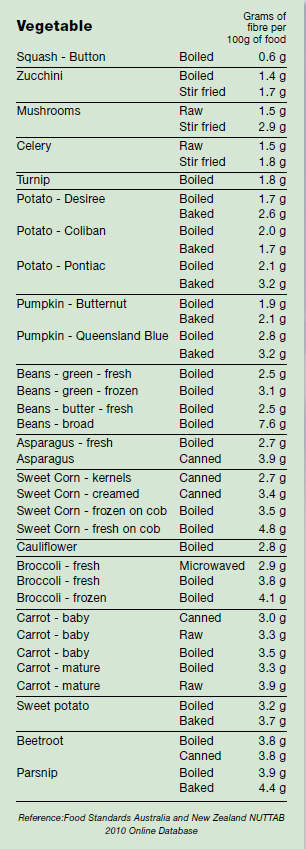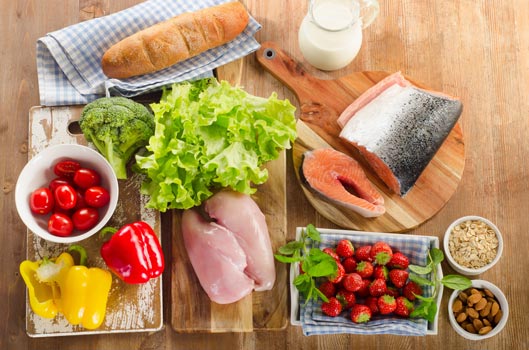[fusion_dropcap]A[/fusion_dropcap] survey that was the largest and most comprehensive health survey ever conducted in Australia was carried out between 2011 and 2013. It was appropriately called  the Australian Health Survey (AHS) and had some interesting findings. The aspect of the findings I would like to focus on for the purposes of this article is vegetable consumption. It was determined via the AHS that vegetable products and dishes are consumed by 75% of the Australian population, with potatoes making up 25% by weight of all vegetables consumed. Self-reporting by survey participants indicated that only 6.8% of the population consumes the recommended usual intakeof vegetables, which is at least five serves per day. One serving of vegetables is 75 grams, which equates to half a cup of cooked vegetables or one cup of raw green leafy vegetables. I have to say that these findings concerned me. My first thought was that if only 6.8% of the general population who have a supposedly intact and healthy intestinal tract are consuming the recommended intake of vegetables, then the statistic will be much lower for Ostomates.
the Australian Health Survey (AHS) and had some interesting findings. The aspect of the findings I would like to focus on for the purposes of this article is vegetable consumption. It was determined via the AHS that vegetable products and dishes are consumed by 75% of the Australian population, with potatoes making up 25% by weight of all vegetables consumed. Self-reporting by survey participants indicated that only 6.8% of the population consumes the recommended usual intakeof vegetables, which is at least five serves per day. One serving of vegetables is 75 grams, which equates to half a cup of cooked vegetables or one cup of raw green leafy vegetables. I have to say that these findings concerned me. My first thought was that if only 6.8% of the general population who have a supposedly intact and healthy intestinal tract are consuming the recommended intake of vegetables, then the statistic will be much lower for Ostomates.
The fact is that many Ostomates experience issues with vegetables due to their fibre content, and so they avoid or restrict their consumption. Fear of blockages from too much fibre is rife amongst Ostomates, especially in the older demographic in whom digestive function and motility have slowed down. Conversely, for some Ostomates too much fibre resultsin copious diarrhoea which also has its consequences.
But the fact remains that vegetables are vital to a varied and healthy diet and need to be consumed regularly to increase nutrient intake and ward off disease. Fermentation of fibre in the intestinal tract increases both water and sodium absorption in the colon, enhances cell proliferation so the intestinal tract remains healthy, acidifies the colon which may be protective against colon cancer, and provides some energy to skeletal and heart muscle. Therefore it is important for Ostomates to consume as much fibre as possible without causing issues. One strategy of addressing this issue of low vegetable consumption due to fibre concerns is to firstly become aware of the fibre content of different vegetables. Several ostomy patients I have been working with recently have found it extremely helpful to know which vegetables are lower and which are higher in fibre, and what mix of vegetables would be appropriate for their circumstances. To this end I have put together a table which illustrates
the amounts of fibre in different vegetables and also how the fibre levels differ in the same vegetables according to how they are prepared / cooked.
From this table we can see that:
- Boiling zucchini results in a lower fibre content than stir frying it,
- Raw mushrooms contain less fibre than those that are stir fried,
- Desiree and Pontiac potatoes contain more fibre when baked rather than boiled, whereas Coliban potatoes contain more fibre when boiled,
- Butternut pumpkin, either boiled or baked, contains less fibre than Queensland Blue pumpkin,
- Fresh green beans and butter beans when boiled contain less fibre than green beans boiled from frozen,
- Fresh asparagus has a lower fibre content than canned asparagus,
- Canned sweet corn kernels contain less fibre than either fresh, frozen or creamed,
- Fresh broccoli that has been microwaved contains less fibre than either fresh or frozen broccoli that has been boiled, and
- Raw baby carrots contain the same amount of fibre as boiled mature carrots, which is less than boiled baby carrots
Therefore, depending on your individual circumstances, it may be prudent to choose diffarent methods of preparation / cooking to reduce the overall fibre content of the meal or to extend the range of vegetables that are incorporated into the meal. For example, choosing to add a little grated baby carrot to a salad during summer rather than grated mature carrot, or microwaving fresh broccoli rather than boiling it during winter, can result in less fiber being consumed. Similarly, adding a teaspoon of canned corn kernels to your salad or vegetable repertoire can increase the colour and variety of foods and nutrients consumed that day without adding as much fibre as fresh or frozen corn kernels. Another method of increasing the intake of vegetables without simultaneously increasing the risk of blockages or diarrhoea is incorporating them into a soup. Many vegetables that would not be suitable for consumption in any other fashion can be consumed in small amounts in a pureed form in a soup. For example, if the fibre content of raw or boiled carrots is too high for them to be consumed safely and comfortably, then adding a small amount into a soup can be beneficial. Pumpkin has a low fibre content and is safe for most Ostomates to consume. Adding a small amount of carrot into a pumpkin soup and pureeing the final
product can increase the amount of vegetables being consumed without causing issues. Similarly, if broccoli is a food that is avoided due to fear of a blockage, then making a broccoli soup can both extend the menu and increase nutrient intake. Celery is often avoided because of its stringy texture but adding it to soups that are pureed at the end is generally safer for most Ostomates.
Soups are also easy to prepare and can be made in one pot with a minimum of fuss. For a person who is experiencing fatigue, making a soup that will last a few meals is a good option. During the winter months I make a soup m ost Sundays. Some goes into the fridge for consumption during the week and the rest goes into the freezer for later enjoyment. Vegetables can also be incorporated safely into the meal and extend the menu in the form of a mash. Our stock standard mash in Australia is mashed potato, however combining potato with pumpkin or sweet potato can create variety without adding too much extra fibre. Cauliflower can also be made into a mash for a different flavour. I encourage you all to endeavour to meet the Australian recommendation of five servings of vegetables per day as often as possible, remembering that one serve is equivalent to half a cup of
ost Sundays. Some goes into the fridge for consumption during the week and the rest goes into the freezer for later enjoyment. Vegetables can also be incorporated safely into the meal and extend the menu in the form of a mash. Our stock standard mash in Australia is mashed potato, however combining potato with pumpkin or sweet potato can create variety without adding too much extra fibre. Cauliflower can also be made into a mash for a different flavour. I encourage you all to endeavour to meet the Australian recommendation of five servings of vegetables per day as often as possible, remembering that one serve is equivalent to half a cup of
cooked vegetables. As always, my recommendations when extending the diet and incorporating new foods into the menu are to try a small amount at a time, eat slowly, chew food really well and wait a few days to determine the response.
Wishing you good
health and happy days,
Margaret.
“Source: (Ostomy Australia Magazine) Margaret Allan is a qualified Nutritionist who advises Ostomates and the general public on diet and health-related matters. Margaret is based in Melbourne and is available for clinical and telephone consultations by appointment. Margaret can be contacted via email on [email protected]”
